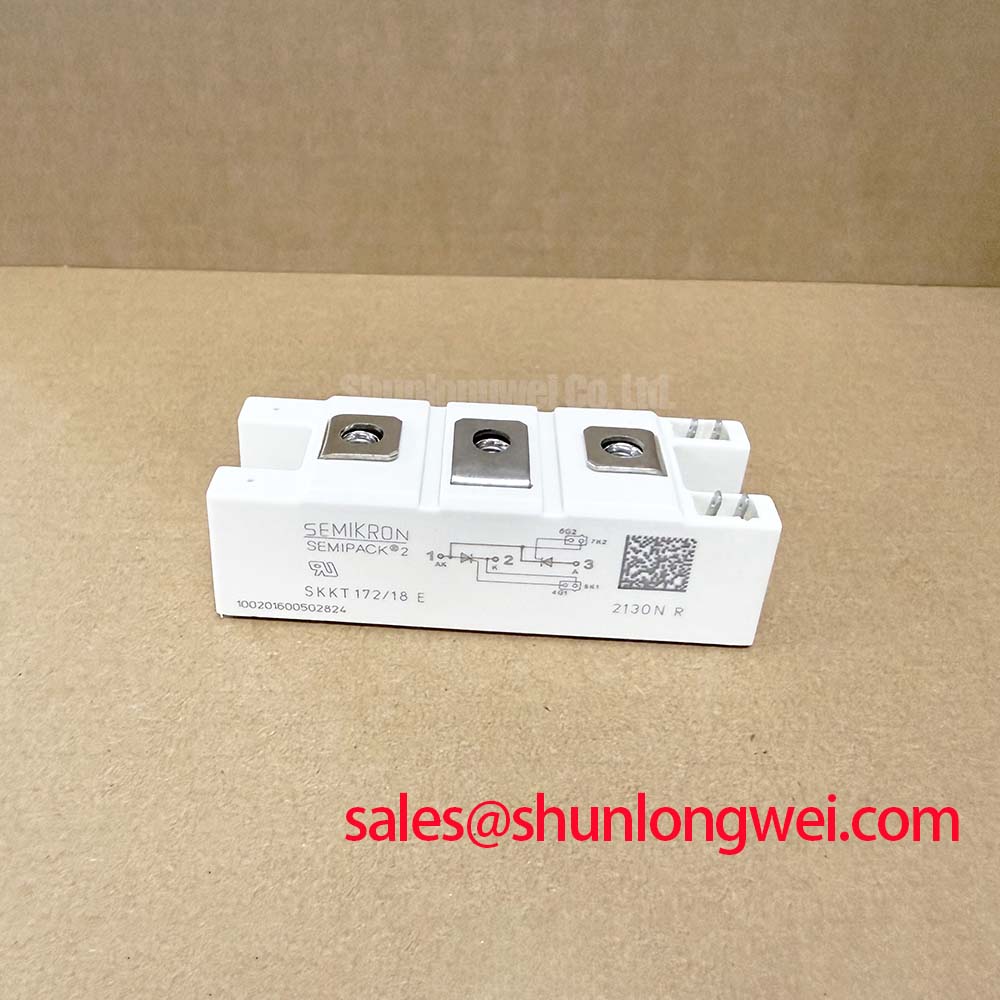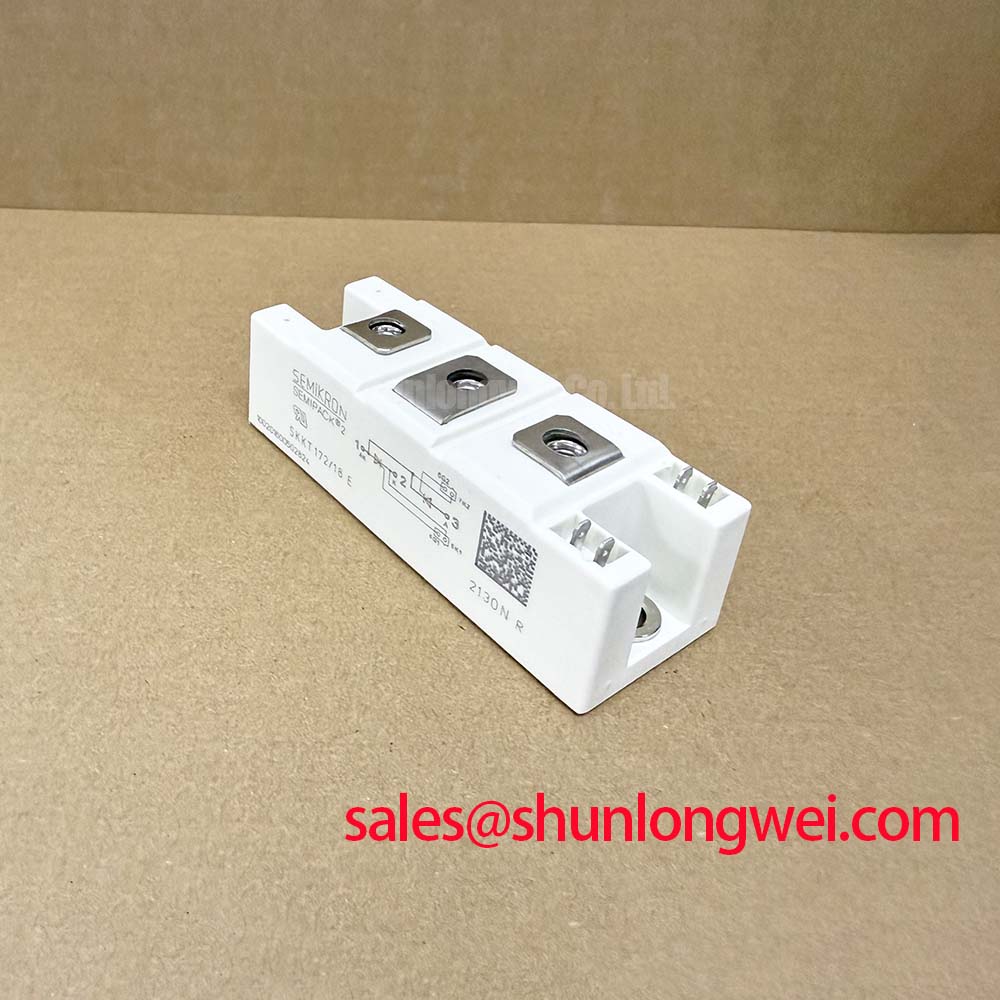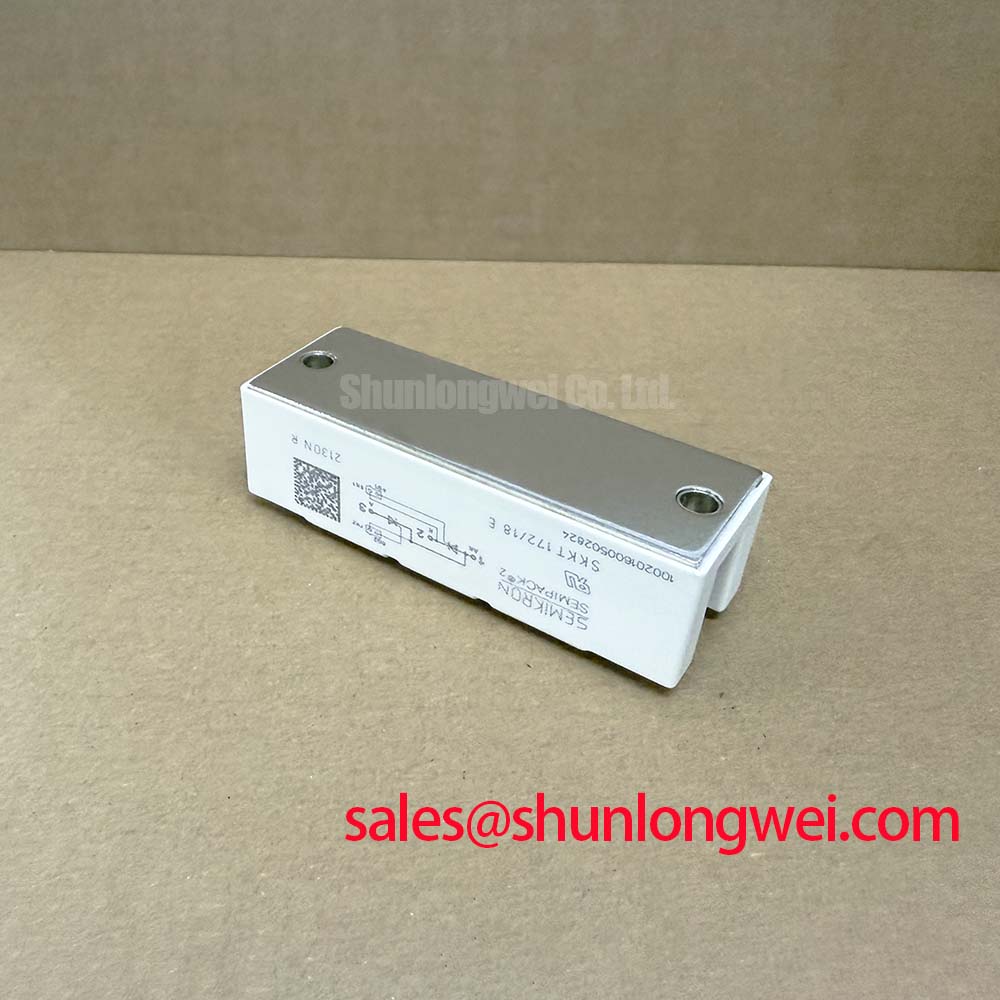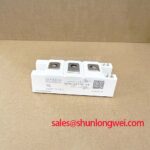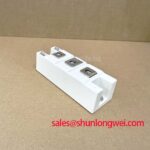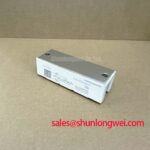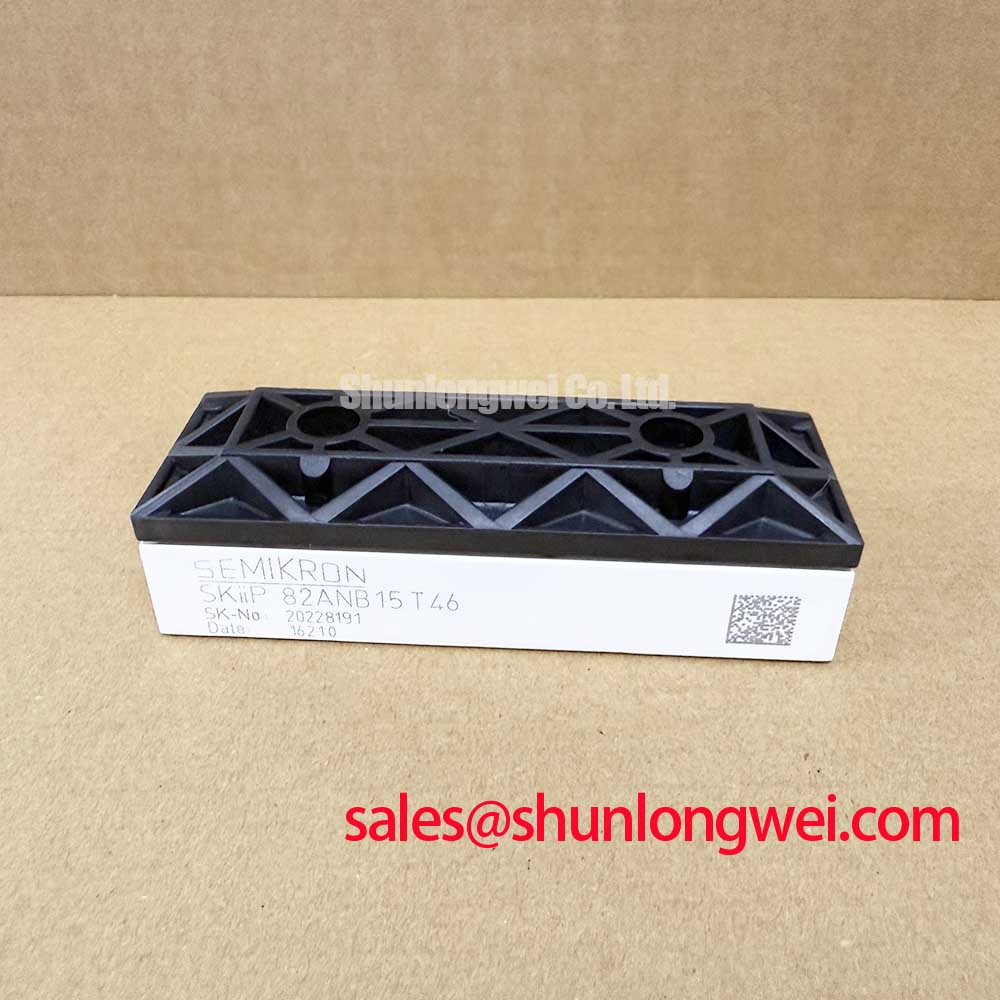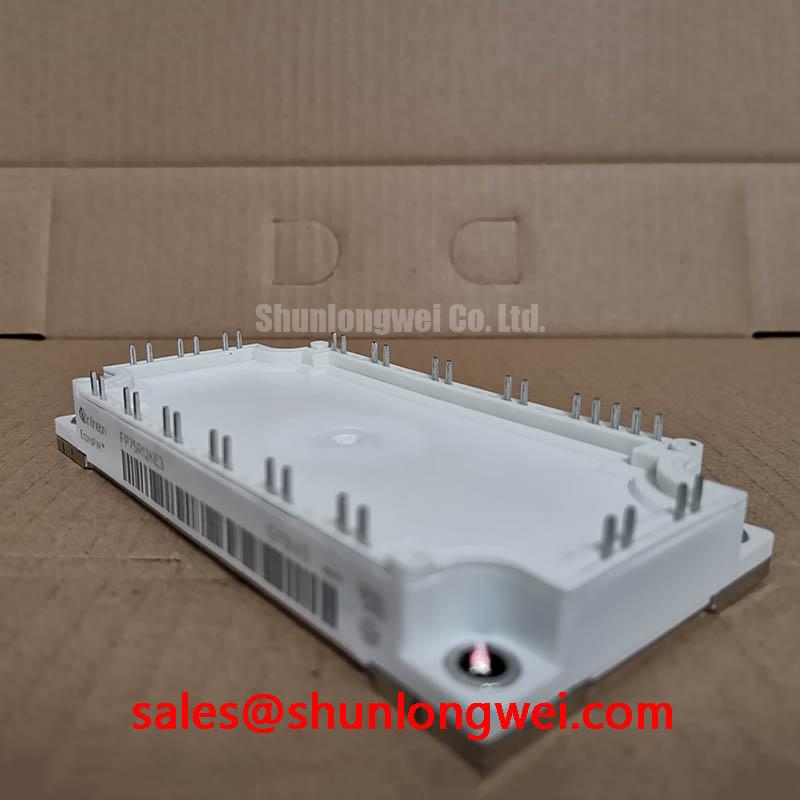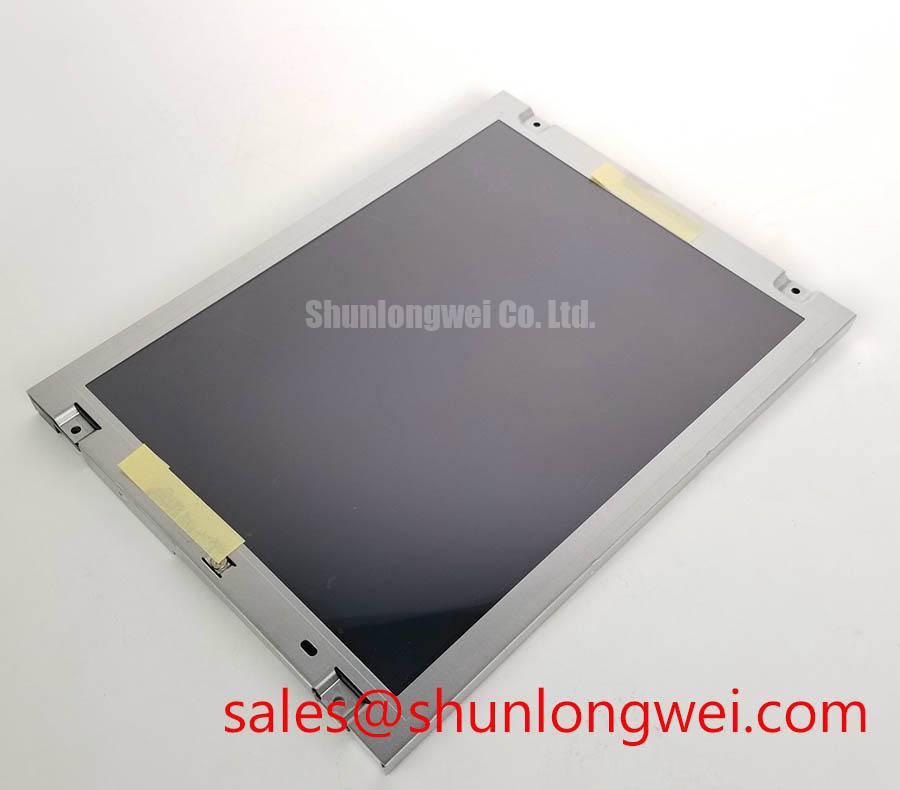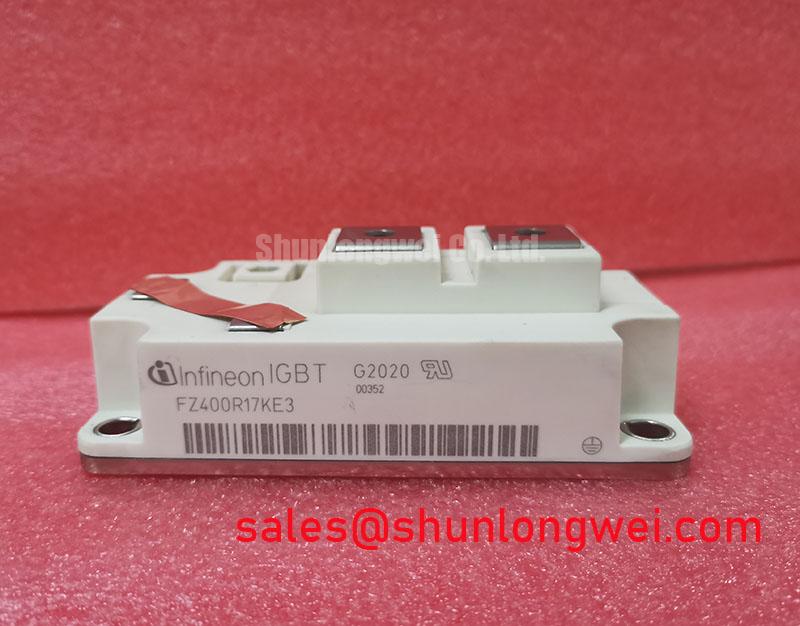SKKT 172/18E Thyristor Module: Datasheet, Specs & Reliability Analysis
Content last revised on October 10, 2025.
Product Overview: Engineering for Longevity
A Deep Dive into the SKKT 172/18E's Core Specifications and Advantages
The SKKT 172/18E is a robust thyristor/diode module from Semikron, engineered for exceptional longevity in demanding power control applications. Its defining feature is a solder-free pressure contact design, which provides superior thermomechanical reliability. With key specifications of 1800V | 172A | Visol 3000V~, this module delivers both high performance and predictable operational life. Core engineering benefits include inherent immunity to solder fatigue and excellent tolerance for high inrush currents. For engineers questioning how to achieve maximum uptime in systems with frequent power cycles, the pressure contact technology provides a definitive answer by eliminating a common point of failure. For industrial AC controllers and motor soft starters requiring uncompromising reliability under thermal cycling, the SKKT 172/18E is the definitive choice.
Application Scenarios & Value
System-Level Benefits in Industrial Power Control and Conversion
The SKKT 172/18E is best suited for applications where long-term reliability and robustness are non-negotiable. Its architecture excels in environments with significant thermal cycling and potential for high surge currents.
High-Fidelity Engineering Scenario: Motor Soft Starters
Consider an industrial conveyor belt system driven by a large AC motor. The primary engineering challenge is managing the repeated inrush currents during startup and the thermal stress from frequent start/stop cycles. The SKKT 172/18E's high surge current rating (ITSM = 4000 A) and substantial I²t value of 80 kA²s directly address this. The I²t rating is like the module's "punching bag" capacity—it defines how much energy from a sudden, brief surge it can absorb without damage. More importantly, its pressure contact technology ensures that the repeated temperature swings do not cause solder fatigue, a common failure mode in conventional modules, thus guaranteeing a longer service life for the entire motor soft starter system.
- Controlled Rectifiers: Provides reliable and precise DC output control for battery chargers and DC power supplies.
- AC Phase Control: Ideal for industrial heating elements, light dimming systems, and static AC switches where precise power regulation is required.
- Crowbar Circuits: Its fast turn-on capability and high surge rating make it suitable for overvoltage protection circuits in high-power systems.
While the SKKT 172/18E is ideal for a wide range of applications, for systems requiring higher current handling capabilities, the related SKKT250/18E offers a similar voltage rating with increased amperage. Conversely, for lower-power needs, the SKKT162/18E provides a comparable feature set in a lower current package.
Key Parameter Overview
Decoding the Specs for Enhanced Thermal Reliability
The technical specifications of the SKKT 172/18E are optimized for robust and stable performance. The following table highlights key parameters and interprets their direct engineering implications, focusing on reliability and thermal management.
| Parameter | Value | Engineering Implication |
|---|---|---|
| Repetitive Peak Off-State Voltage (VDRM/VRRM) | 1800 V | Provides a significant safety margin for operation on 400V, 480V, and even 690V industrial AC lines, ensuring resilience against voltage transients. |
| On-state Current (ITAV @ Tcase=85°C) | 172 A | Defines the continuous current handling capability under specified cooling conditions, suitable for medium to high-power control applications. |
| Surge On-state Current (ITSM) | 4000 A (10 ms, 50 Hz) | Indicates extreme robustness against fault conditions and high inrush currents typical of motor starting or capacitor charging. |
| I²t-value | 80 kA²s (10 ms) | A critical parameter for fuse selection and protection coordination, ensuring the module can withstand significant energy let-through during a fault. |
| Thermal Resistance, Junction to Case (Rth(j-c)) | 0.14 °C/W (per thyristor) | A low thermal resistance value signifies efficient heat transfer from the silicon chip to the heatsink, simplifying thermal design and allowing for higher power density. For a deeper understanding of thermal metrics, explore this guide on unlocking thermal performance. |
| Isolation Voltage (Visol) | 3000 V~ (50 Hz, RMS) | The integrated Al₂O₃ ceramic baseplate provides high dielectric strength, simplifying assembly by eliminating the need for external insulating pads and enhancing overall system safety. |
Download the SKKT 172/18E datasheet for detailed specifications and performance curves.
Technical Deep Dive
A Closer Look at the Pressure-Contact Design for Long-Term Reliability
What is the core benefit of the SKKT 172/18E's design? Its pressure contact technology provides superior long-term reliability. Unlike conventional modules that rely on soldered connections between the silicon chip and the baseplate, the SKKT 172/18E uses a precisely engineered spring-loaded system. This exerts a constant, uniform pressure on the components, ensuring excellent electrical and thermal contact without the need for solder.
This design choice directly addresses a primary cause of power module failure: solder fatigue. During operation, power modules heat up and cool down. These temperature cycles cause different materials to expand and contract at different rates, putting immense stress on rigid solder joints. Over thousands of cycles, this stress leads to micro-cracks, increasing thermal resistance and eventually causing catastrophic failure. The pressure contact system eliminates this failure mode entirely. Think of it like a high-end mechanical watch movement versus a glued-together electronic one. The mechanical assembly (pressure contact) is designed to withstand stress without permanent fatigue, while a soldered joint has a finite life when subjected to constant heating and cooling.
Frequently Asked Questions (FAQ)
How does the pressure contact design of the SKKT 172/18E improve reliability over soldered modules?
It completely eliminates the solder layer between the chip and the baseplate, thereby removing the risk of solder fatigue and delamination caused by thermal cycling. This results in a significantly longer operational lifespan and higher reliability, especially in applications with frequent on/off cycles.
What is the significance of the 4000 A ITSM rating for an engineer designing a motor controller?
This high surge current rating ensures the module can safely withstand the large, brief inrush currents that occur when starting an AC motor. It provides a robust safety margin, preventing component failure during startup and reducing the need for oversized components, which simplifies the design of a reliable motor soft starter.
Can the SKKT 172/18E be used for DC applications like controlled rectifiers?
Yes, absolutely. The two thyristors in the module can be configured as a controlled half-bridge or full-bridge rectifier (using two modules). Its high voltage and current ratings make it an excellent choice for building robust and reliable controlled rectifier circuits for industrial DC power supplies and battery charging systems.
What does the '18' in the part number SKKT 172/18E signify?
The number '18' indicates the module's repetitive peak reverse voltage (VRRM) rating. It corresponds to a voltage class of 1800V (18 x 100V). This is a standard naming convention used to quickly identify the voltage capability of the device. What is the module's maximum repetitive peak reverse voltage? The SKKT 172/18E is rated for 1800V.
How does the Al₂O₃ isolated baseplate simplify thermal management and assembly?
The aluminum oxide (Al₂O₃) ceramic baseplate is an excellent electrical insulator but a good thermal conductor. This integrated isolation means the module can be mounted directly to a grounded heatsink without requiring a separate, thermally-insulating pad. This simplifies the mechanical assembly, reduces parts count, lowers assembly costs, and improves the overall thermal transfer path, leading to a cooler-running and more reliable system.
An Engineer's Perspective on Design-In
Integrating the SKKT 172/18E into a new design is a strategic decision that prioritizes long-term system reliability over minimal initial component cost. Its pressure contact technology and robust electrical characteristics provide a "design and forget" solution for critical power control stages. For engineers building systems where maintenance is difficult and uptime is paramount, the superior thermal cycling capability of this module offers a tangible advantage, directly contributing to a lower total cost of ownership over the product's lifecycle. For additional context on interpreting such features, our guide on decoding power module datasheets offers valuable insights.

